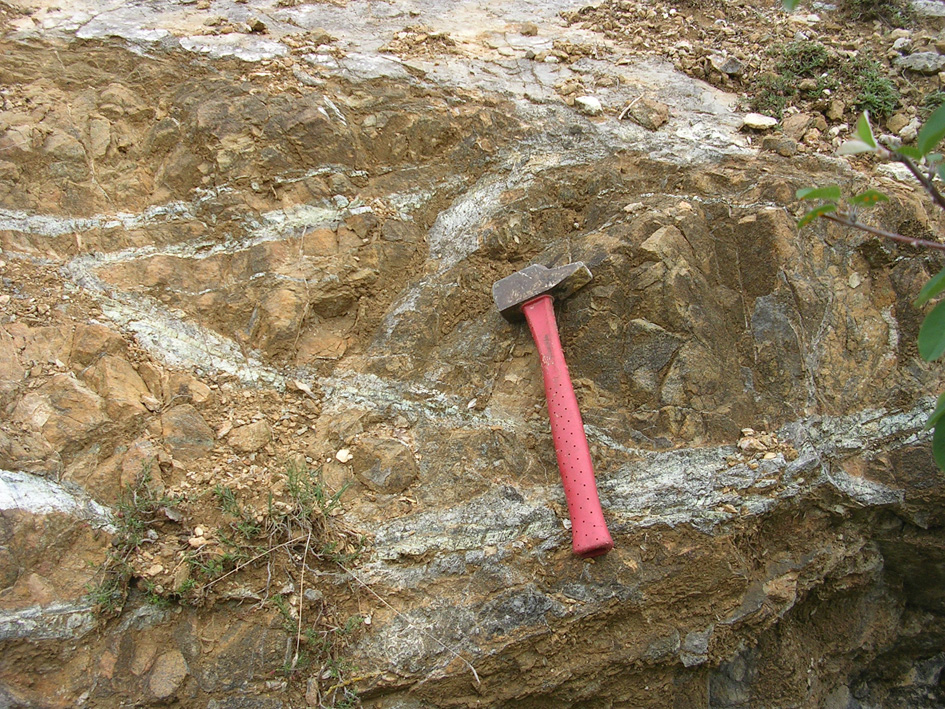
Mantle exhumation during the Cretaceous rifting event in the North Pyrenean Zone : field evidences of associated serpentinization and carbonatization processes
Serpentine Days optional field-trip (30 September – 1 October 2016)
The 2-day field trip to the Pyrenées will be led by Y. Lagabrielle (U. Rennes, France) and M. de Saint-Blanquat (U. Paul Sabatier – Toulouse, France).
The field trip fees (110€) include travel by bus, food and one night in a hotel in Massat (a village close to the Lherz Massif in the Pyrenées). Travel time from Sète (Lazaret centre) to the Pyrenées is estimated at 3-4 hours, and the participants should expect a late arrival (after 7:00 PM) on Day 2.
The field trip will focus on the field evidences of mantle denudation associated to cretaceous rifting event in the North Pyrenean Zone. Special attention will be given to serpentinization imprint in the lherzolitic bodies.
Day One: We will start in the Etang de Lherz area with an overview of the geological setting of the mantle bodies in the North Pyrenean Zone (NPZ): Axial Zone basement, granulite lenses, HT-LP metamorphic Mesozoic marbles, polymictic sedimentary breccias. Geological and chronological constraints obtained so far in the region and proposed geodynamical evolution according to recent models. Discussion about some implications on mantle/crust coupling in relation with the processes of crustal thinning.
Several stops along the Etang de Lherz mantle body will allow the following observations: harzburgites/lherzolites relationships and evidence of refertilization, lherzolites and the late melting stage of the mantle rocks during the Cretaceous event, development of shear bands with tectonite-type foliation related to the exhumation, serpentinization along the tectonite corridors, development of fracturation and related ophicalcites.
We will focus on the relationships between the mantle rocks and their sedimentary cover: observation of various types of ophicalcites, ultramafic sandstones, microbreccias and polymictic breccias deposited on the ultramafic basement, including the saphirine-kornerupine sandstones. Field evidence for various sources of the clastic sediments: fresh or serpentinized mantle rocks, gabbros, meta-ophites, meta-evaporitic sediments, meta-dolomites, marbles, etc.
At the end of the trip, all the geological observations will be compiled, and additional information will be provided including geochronological and geochemical data and isotope mineralogical compositions of the observed rocks. A model for the emplacement of the NPZ mantle bodies will be proposed.
Day Two (half-day): On the way back to Perpignan, we will stop at the Bestiac area starting with an overview of the geological setting of the mantle bodies here: field evidence of sedimentary reworking of mantle rocks and synthetic geological cross-section of the NPZ. Special attention will be payed to the presence of the North Pyrenean massifs showing major metasomatic extensional shear zones of Mid-Cretaceous age (Luzenac talc deposits).
An olistolith of highly serpentinized ultramafic rock allows the observation of the phacoidal fabric related to the exhumation processes. Finally a link will be proposed (and discussed!) between the evolution of the continental basement and the coeval exhumation of the mantle rocks. All our observations are consistent with a model of extreme continental thinning implying lateral extraction of the crust and ductile deformation of the pre-rift cover under a Cretaceous blanket of flysch deposits.
A panorama of the Trois Seigneurs massif taken from the Lherz ultramafic breccias and a view of the Etang de Lherz

The phacoidal fabric of the Bestiac body outlined by a network of fibrous serpentine veins.

